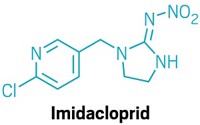Advertisement
Grab your lab coat. Let's get started
Welcome!
Welcome!
Create an account below to get 6 C&EN articles per month, receive newsletters and more - all free.
It seems this is your first time logging in online. Please enter the following information to continue.
As an ACS member you automatically get access to this site. All we need is few more details to create your reading experience.
Not you? Sign in with a different account.
Not you? Sign in with a different account.
ERROR 1
ERROR 1
ERROR 2
ERROR 2
ERROR 2
ERROR 2
ERROR 2
Password and Confirm password must match.
If you have an ACS member number, please enter it here so we can link this account to your membership. (optional)
ERROR 2
ACS values your privacy. By submitting your information, you are gaining access to C&EN and subscribing to our weekly newsletter. We use the information you provide to make your reading experience better, and we will never sell your data to third party members.
Environment
California Limits Use Of Pesticide Chloropicrin As A Soil Fumigant
Move to protect people from irritating chemical could raise price of strawberries
by Britt E. Erickson
January 23, 2015
| A version of this story appeared in
Volume 93, Issue 4
Farmers in California are facing tough new restrictions on the pesticide chloropicrin, which is commonly injected into the ground to kill pests before crops are planted. The new regulations are intended to protect workers and people who live near fields that are treated with the fumigant, which is a powerful irritant to the eyes and respiratory tract.
California’s new rules establish minimum buffer zones of 25 to 100 feet, depending on whether a tarp is used to keep the fumigant from drifting into surrounding areas. They also limit applications of chloropicrin to 40 acres per day, or 60 acres per day if a tarp is used.
The chemical is widely used to control soil pests that threaten numerous crops, but about 70% of all chloropicrin is used to fumigate strawberry fields.
California produces about 90% of the U.S. strawberry crop, and industry groups say the new rules will raise the price of this fruit. The tighter regulations mean additional costs for strawberry growers, explains Carolyn O’Donnell, spokeswoman for the California Strawberry Commission.
Health and environmental advocates, however, say the restrictions do not go far enough to protect rural residents and children attending schools near farm fields. “Chloropicrin should be phased out by 2020, along with other hazardous fumigant pesticides,” says Sarah Aird, codirector of Californians for Pesticide Reform.
The restrictions are more protective than those at the federal level. “Our regulatory program is the most stringent in the nation and sets an example for other states to follow,” says Brian R. Leahy, director of California’s Department of Pesticide Regulation.





Join the conversation
Contact the reporter
Submit a Letter to the Editor for publication
Engage with us on Twitter